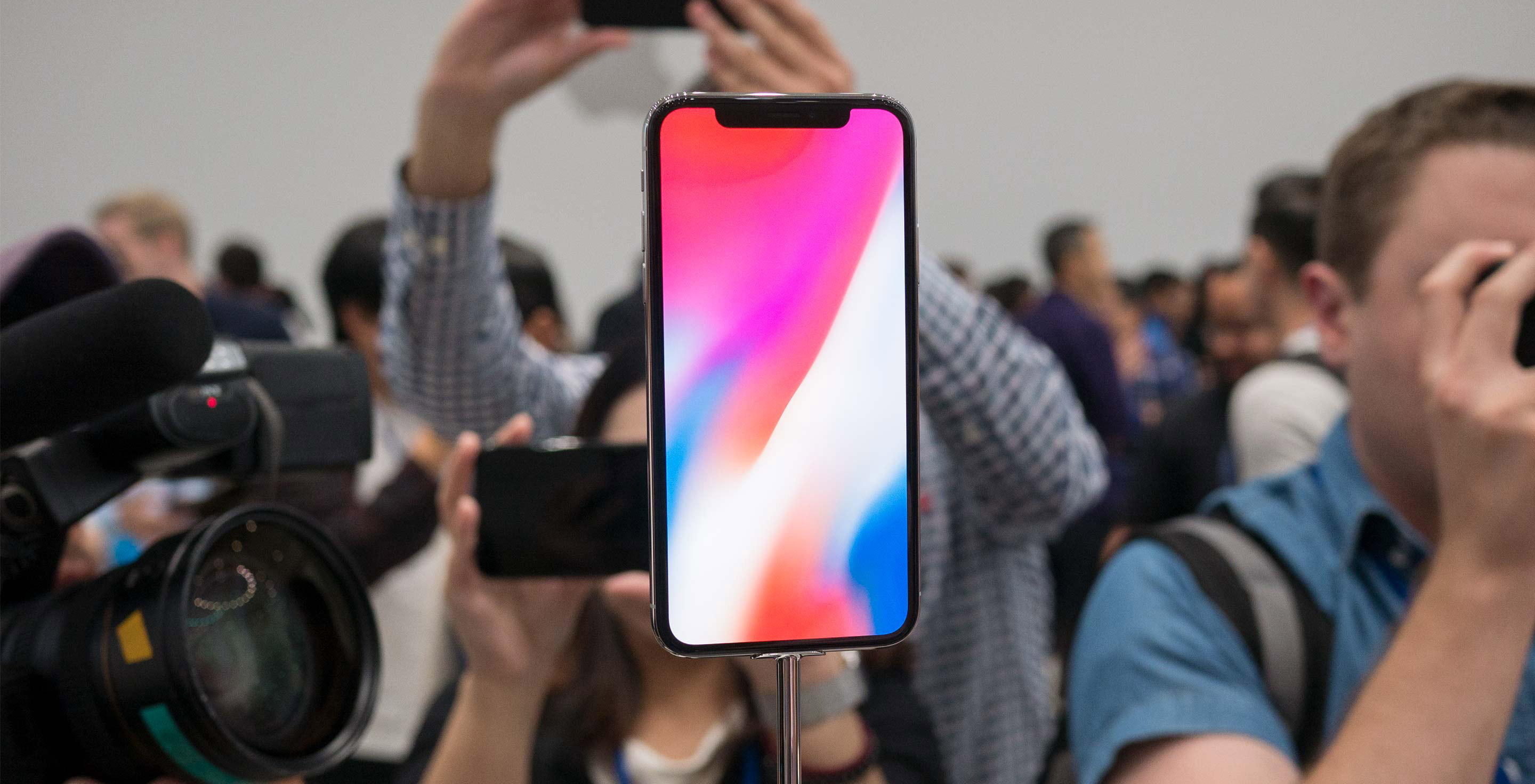
While the announcement of three new iPhones is always cause for excitement, Apple’s latest conference also yielded a veritable bevvy of new tech and cool new ideas.
Between set-top boxes, a new smartwatch, as well as advances in augmented reality, it’s been a big day for Apple. Read on to learn more about some of the most important announcements at today’s conference.
iPhone X
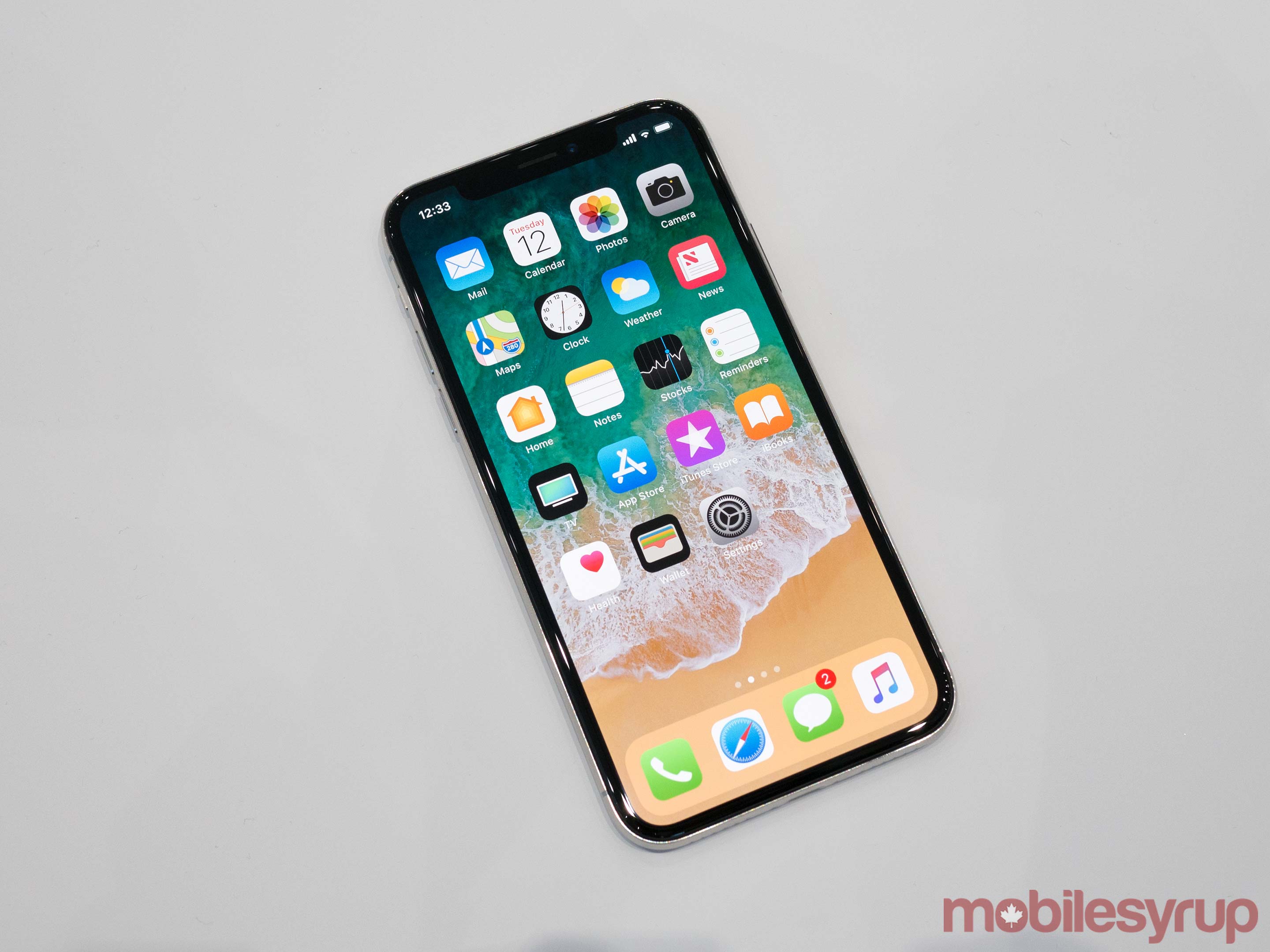
The iPhone X is Apple’s flagship smartphone, and marks the 10-year anniversary of the iPhone. This new flagship features an A11 Bionic chipset and an edge-to-edge 5.8-inch 2436 x 1125 pixel Super Retina OLED display with 458 pixel density. The iPhone X bears a resemblance to the Essential Phone, as both devices have almost non-existent top, side and bottom bezels.
However, the iPhone X has a larger horizontal cutout where the front facing camera is, so that it can fit in more sensors for Face ID.
Additionally, the iPhone X has a dual-camera setup with two 12-megapixel sensors that both have optical image stabilization (OIS). One of the lenses features a f/1.8 wide-angle aperture, while the other is a f/2.4 telephoto aperture.
The iPhone can also record in 4K at 24, 30 or 60fps and supports slow motion video capture for 1080p at 120 or 240fps.
As for battery life, all we know is that the iPhone X’s battery should be able last two hours longer life than the iPhone 7 — according to Apple, that is.
The iPhone X will cost $1,319 CAD for the 64GB model and $1,529 for the 256GB variant. The iPhone X will be available for purchase on November 3rd, 2017, with pre-orders starting October 27th, 2017.
Face ID
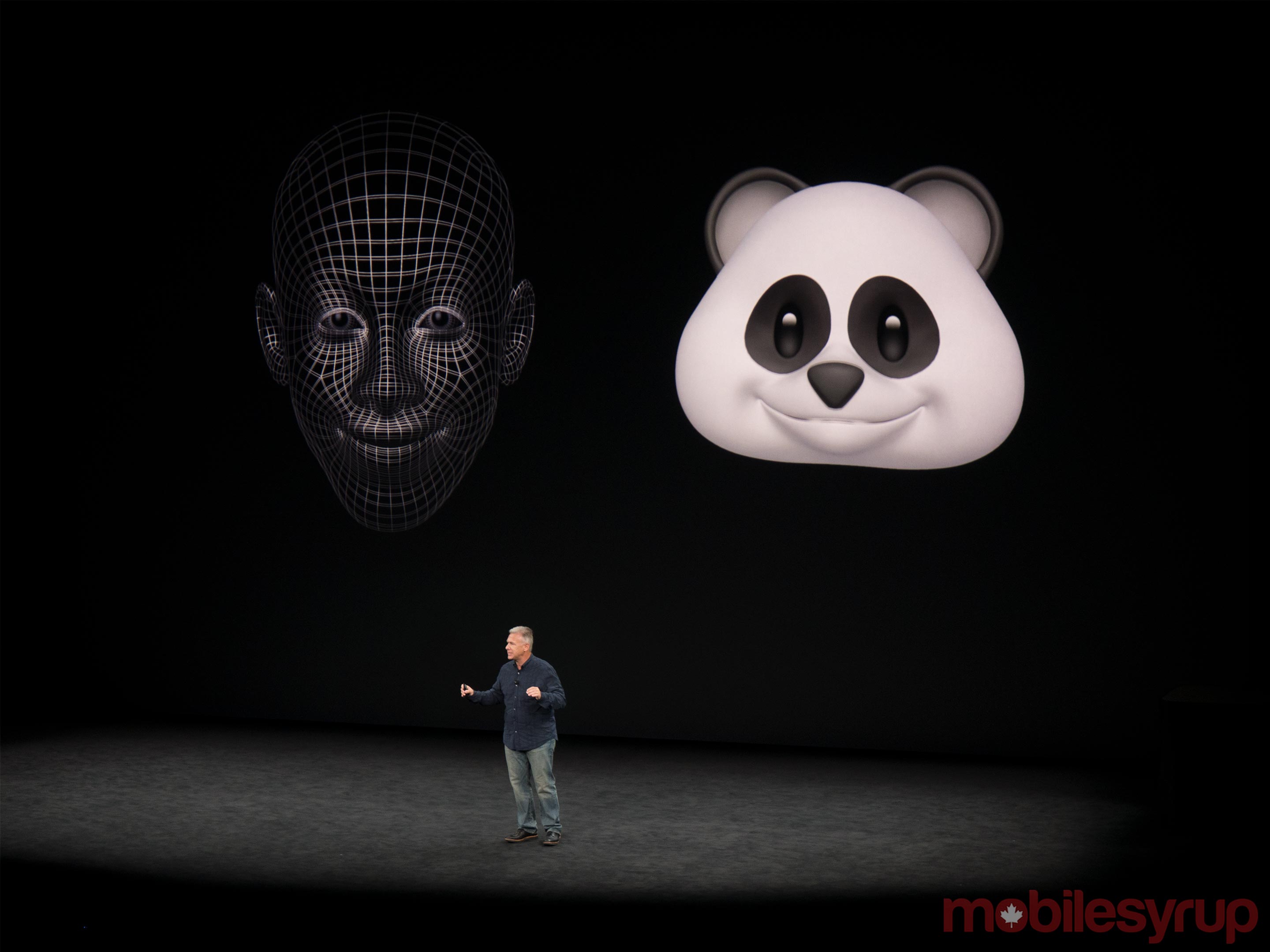
While the iPhone X has a number of new features, arguably the most notable one is Face ID. Face ID circumvents the need for a fingerprint sensor, which has been removed from the phone’s front panel in favour of a bezel-less design. The new feature will handle both unlocking the device and Apple Pay.
Face ID uses the iPhone X’s TrueDepth camera technology to recognize its user’s face. According to Apple, Face ID analyzes more than 30,000 invisible dots to create a map of the user’s face. Using machine learning, Face ID can also identify the phone’s owner even if they’ve grown a beard or wear glasses.
Additionally, Apple claims that Face ID can’t be tricked by a photo, and that there’s a one-in-a-million chance that an impostor will be able to unlock the phone using Face ID. In contrast, Apple said that there is a one-in-50,000 chance that Touch ID can be fooled. Apple even argued that Face ID will be able to prevent identical twins from unlocking the iPhone X.
Face ID also allows for ‘Animoji,’ which use facial recognition technology to map human facial movements onto one of 12 emoji available at launch. Animoji means that iPhone X owners can proudly send winking poop emoji, as well as cat, dog, monkey and unicorn emoji — among others — to each another.
iPhone 8/8 Plus
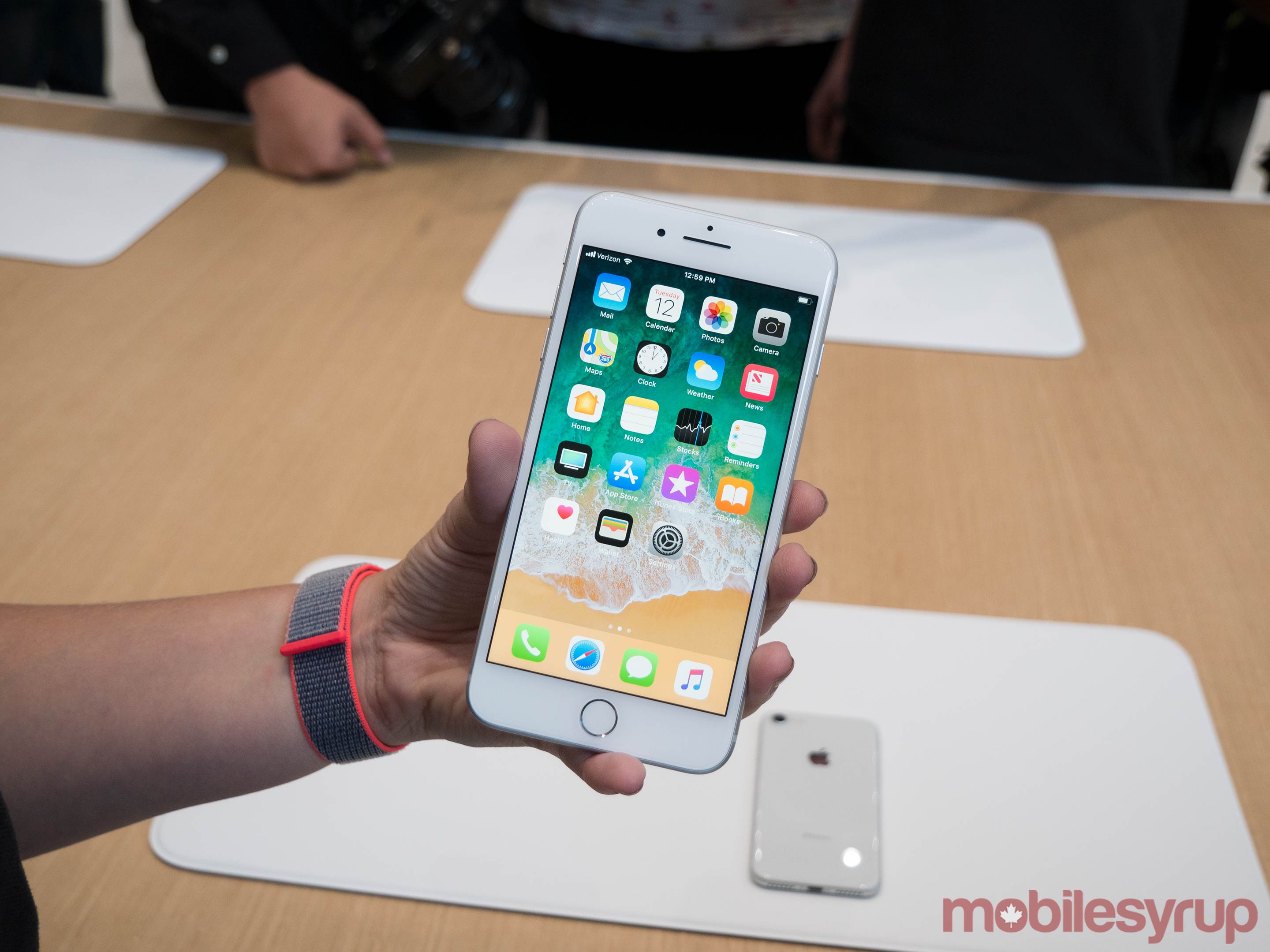
While the iPhone X was undoubtedly Apple’s showstopper, the iPhone 8 and 8 Plus are more of what we expect from the company’s iterative design philosophy. In fact, the iPhone 8 and iPhone 8 Plus share many of the same design features as the iPhone 7, including the Touch ID fingerprint sensor that was initially available on the iPhone 5S back in 2013.
The iPhone 8 comes with a 4.7-inch, LCD IPS 1334 x 750 pixel display with a pixel density of 326 ppi. The iPhone 8 Plus comes with a 5.5-inch, LCD IPS 1920 x 1080 pixel display with a 401 ppi pixel density.
Both models include Retina HD True Tone display, and both devices are powered with Apple’s new A11 Bionic chip. Additionally, both models feature the same 7-megapixel front facing camera with 1080 HD video recording and a f/2.2 aperture, though they differ on the rear-facing side. The iPhone 8 Plus includes a dual-camera setup with one wide-angle f/1.8 aperture sensor and one f/2.8 aperture.
This is first time that all of the devices that Apple unveiled feature OIS on the rear facing camera. However, unlike the iPhone X, the 8 Plus only has a OIS sensor on one of its sensors.
The iPhone 8 will cost $929 CAD for the 64GB model and $1,139 for the 256GB variant. The iPhone 8 Plus, meanwhile, will cost $1,059 for the 64GB model and $1,269 for the 256GB variant. Both models are available for for pre-order on September 15th, 2017, and launch on September 22nd, 2017.
Apple TV 4K
It’s been almost two years since Apple updated its Apple TV set-top box, so the announcement that the fifth generation Apple TV comes with support for 4K and HDR streaming is certainly exciting news.
The Apple TV 4K device looks almost identical to its fourth generation predecessor; internally, however, the Apple TV 4K comes with an A10X Fusion processor, runs the latest version of tvOS 4, and is compatible with 4K televisions. Apple also announced that users will be able to stream 4K content through Netflix and Amazon Prime Video. Netflix’s 4K library will be available at launch, but Amazon Prime Video’s 4K content will be “coming soon.”
Canadians are also in luck, as Apple’s TV app is coming to Canada on September 19th and CBC and CraveTV will now support the app. The updated device will be available on September 22nd, 2017. The 32GB model will cost $229 CAD, while the 64GB model will cost $249.
Apple Watch Series 3
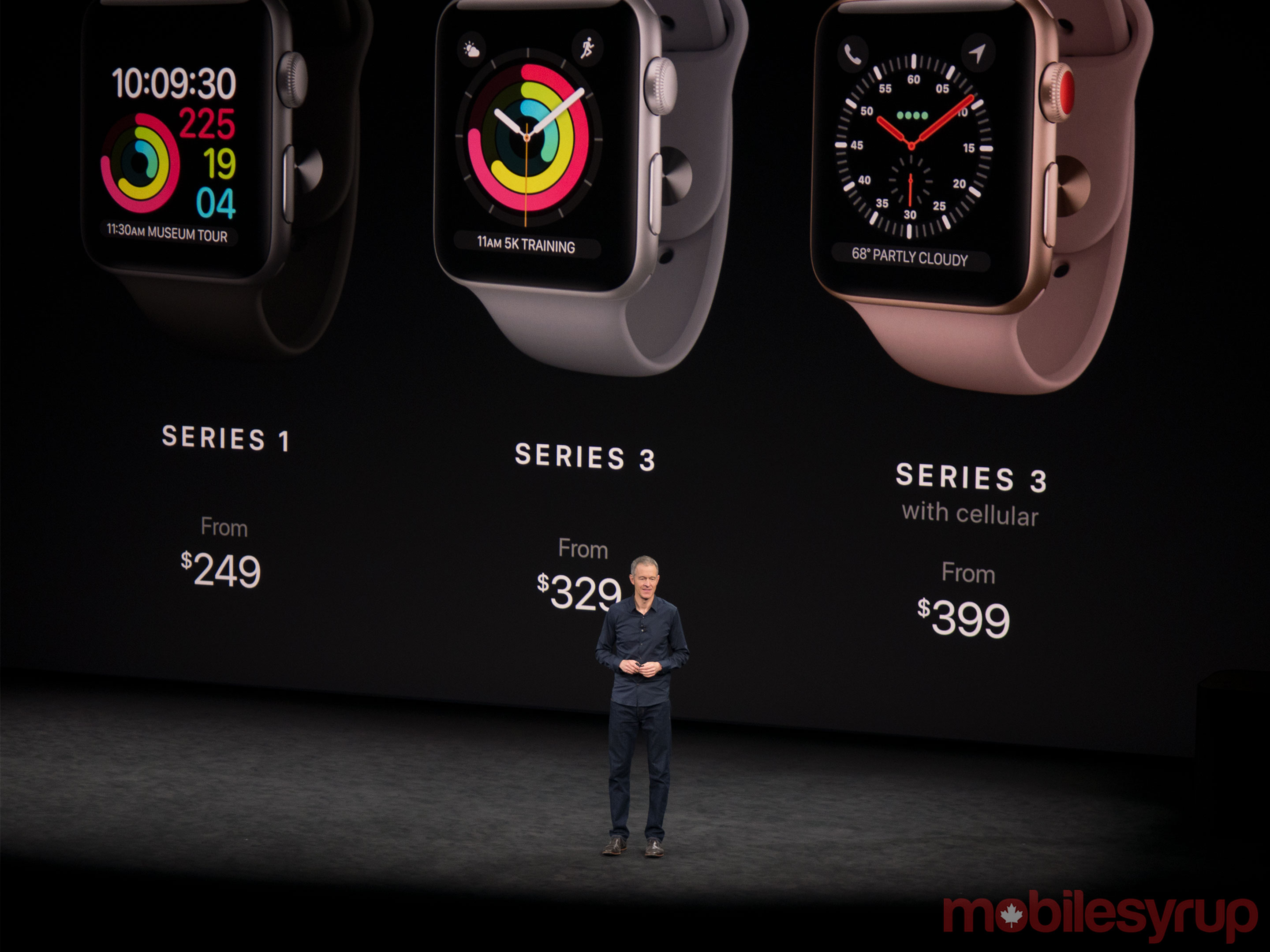
The announcement of the Apple Watch Series 3 wasn’t the only major news that the Cupertino computing giant had to report on its smartwatch. The Apple Watch is now also the best-selling watch around the world, having beaten Swiss manufacturer Rolex for the top spot.
Still, the Watch Series 3 device is undoubtedly interesting, chiefly because the device finally comes with support for cellular networks through an eSIM built directly into the watch. Canadians will be able to use the Watch Series 3 with Bell — with the company’s $5 CAD smartwatch plan — as well as Telus, through an as-of-yet-unannounced plan.
The Watch Series 3 will be available in gold, silver and space grey; will cost $519 CAD for the LTE-capable version and $429 for the non-LTE version; and will be available on September 22nd, 2017.
ARKit
ARKit is Apple’s software that lets users utilize augmented reality (AR) to interact with their environment.
In a way, ARKit is Apple’s answer to the Google’s cancelled Project Tango initiative, as well as a direct competitor to Google’s ARCore system.
The Machines running on #ARKit powered by #UE4! https://t.co/xC4hum7dhk @EpicGames @UnrealEngine #ar #AugmentedReality @Apple pic.twitter.com/5rOpUIlDuA
— Directive Games (@DirectiveGames) July 21, 2017
While ARKit was announced at Apple’s WWDC earlier this year, today’s announced smartphones are”the first iPhone really created for augmented reality, and the first smartphone as well.”
It’s true that ARKit is available with iOS devices equipped with an A9 chip or higher, but the newly unveiled A11 Bionic chipset will enable more app and game developers to utilize the ARKit platform.
Developers Directive Games used today’s event as an opportunity to debut The Machines, an AR game that specifically runs on devices powered by the A11 Bionic chipset.
AirPower
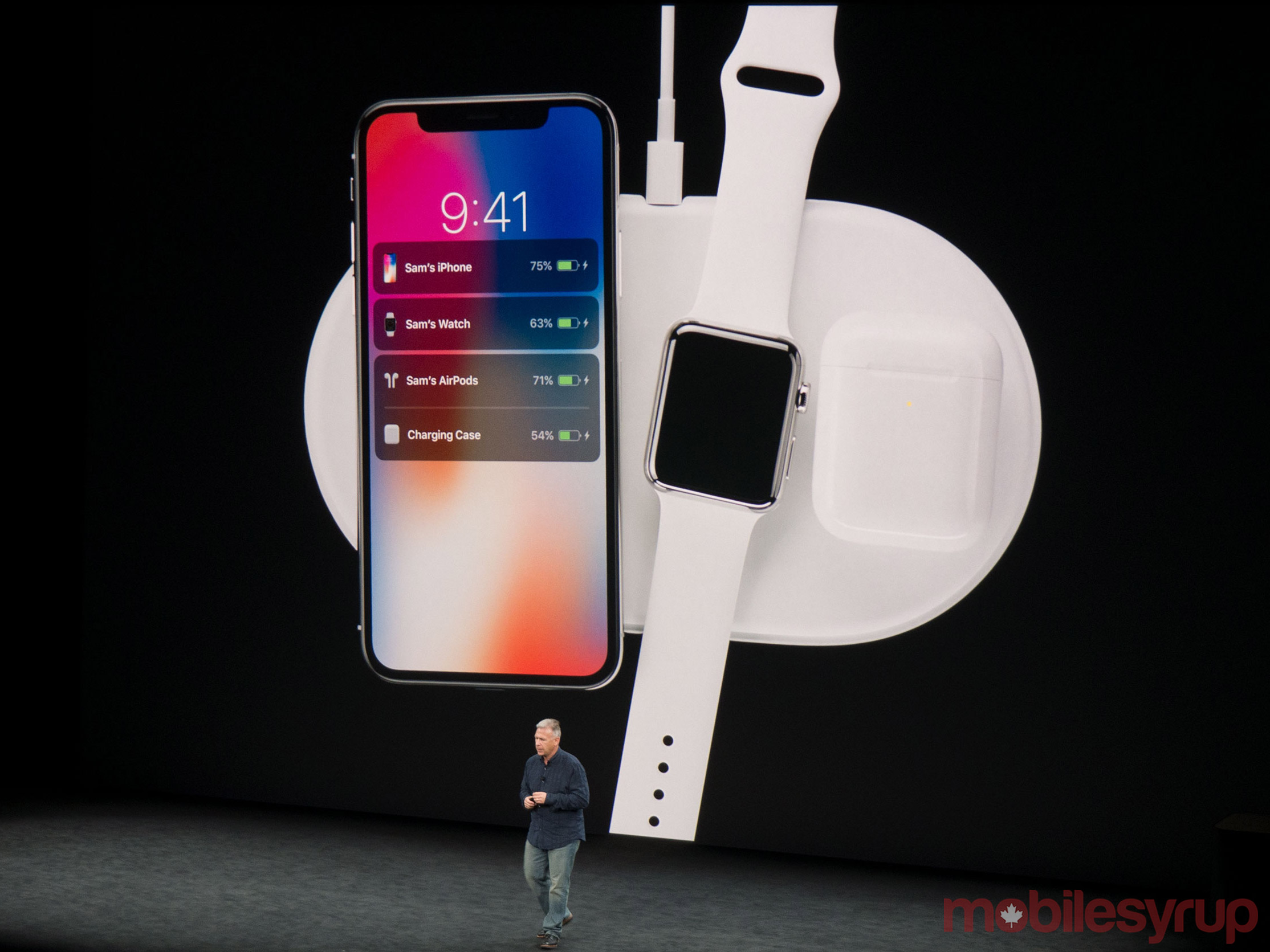
It might seem like a minor upgrade, but the fact that Apple’s latest iPhones support the Qi charging standard is fantastic news for both fans of Apple and fans of wireless charging. Wireless charging has been a popular charging solution for Android phones for years, but this is the first time that an iPhone has supported the feature.
However, what’s especially interesting is that Apple announced the AirPower wireless charging mat, capable of simultaneously multiple devices at once. In fact, an iPhone X, Apple Watch, as well as the Apple AirPods case were all shown to be able to simultaneously charge on a single AirPower mat.
Apple’s senior vice president of worldwide marketing, Phil Schiller, said that Apple is also working with Qi to incorporate this charging format into a new format.
Apple Retail Spaces
Apple might release iterative device upgrades every year, but the company’s brick-and-mortar stores have changed very little over the years. As of 2017, however, this is no longer the case.
In a dedicated segment, Angela Ahrendts — Apple’s senior vice president of retail — announced that Apple Stores around the world will be renamed to ‘Town Squares.’ The decision is a result of the fact that Apple now views its physical retail locations as gathering spaces meant to invoke a sense of community — not just stores for Apple products.
Not only will the new Apple Town Squares feature quiet spaces for developers and entrepreneurs, but certain locations will also feature outdoor plazas, as well as redesigned help stations, dubbed “Genius Grove.” Additionally, visitors will be able to take part in hands-on sessions and workshops, as per the previously announced ‘Today at Apple’ program.
MobileSyrup may earn a commission from purchases made via our links, which helps fund the journalism we provide free on our website. These links do not influence our editorial content. Support us here.


